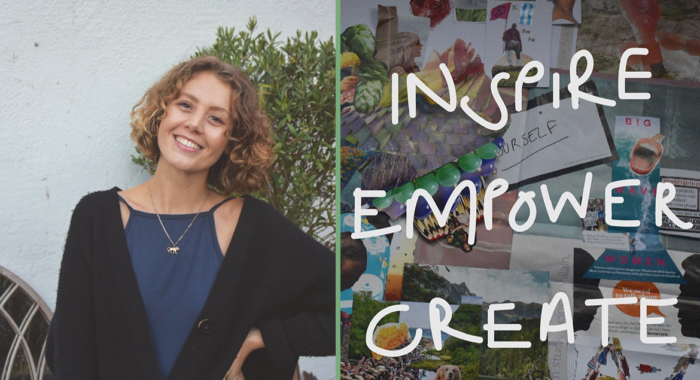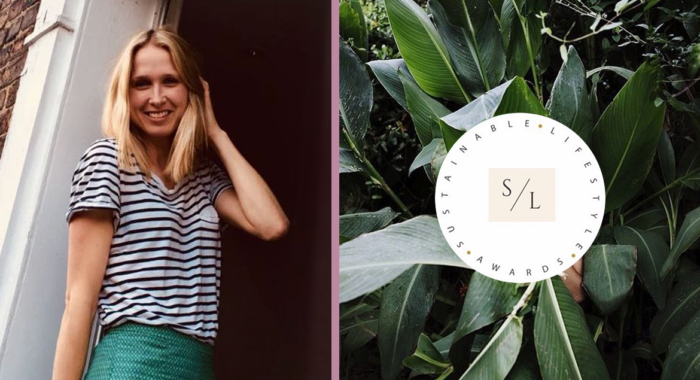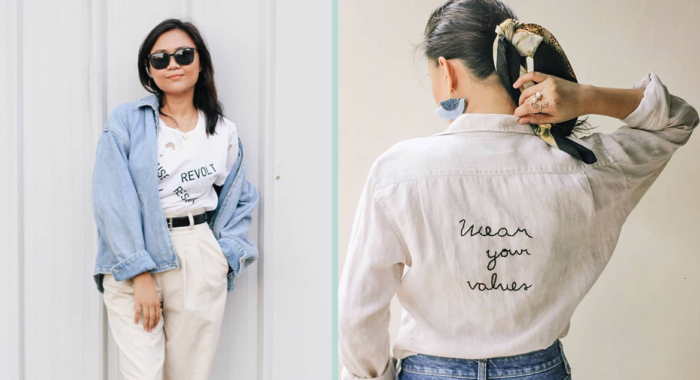3 sustainable fashion founders get real about consumption
We know we have a consumption problem, but the root of the issue is a lot more complicated. As we bring our focus on consumption to a close, we speak to 3 sustainability-minded entrepreneurs wrestling with the complexities of consumption while bettering the planet through their bold initiatives.
Let’s start with psychology.
“Many of our global problems have occurred as a result of our prioritisation of extrinsic values, such as power and wealth, which have been deemed more important than people and the planet”, says and beyond cofounder Amy Foster-Taylor. Feeling dishearted with the polarisation of our world, Amy’s agency seeks to counteract disconnection and bring people together by harnessing shared values. This started with a stint in fashion marketing that changed everything.
“The messaging we consume has a huge impact on shaping our values and consequential behaviour. In fact, the role of fashion marketing is typically to cement extrinsic values within customers, such as our desire for material possessions”, says Amy.
This idea of marketing as the driver of consumption is hardly new. And for many of us, who place a lot of thought into the goods we buy, we can believe that we’ve escaped the pressure of marketing. However, that might not be the case. Amy warns that within the niche of sustainable fashion, marketing messages have their own clever ways of tying people to products. “Advertisers within sustainability use a psychographic mapping system called ‘Values Mode’ to deliver messaging to the correct people. They split people into three categories: Settlers (security driven), Prospectors (outer directed / esteem driven), and Pioneers (inner directed). To encourage more environmental behaviour from Prospectors, messaging will appeal to their desire for increased self-esteem, image, and wealth, believing that as needs are satisfied, they will transition through the groups. Essentially saying, ‘if you buy this Tesla, you will then act more environmentally’”.
So if marketers are preying on our psyches inside and outside of the sustainability paradigm, how can we escape coercion? In a time where fashion brands have platforms to be not only clothiers but educators, the opportunity for a positive change in the narrative is out there. Amy tells us, “Psychologists agree that appealing to extrinsic values only reinforces their importance, rather than changing behaviour towards sustainable decision-making… What if fashion marketing was used as a celebration of creativity and a tool for education? How could fashion marketing transcend its current role and appeal to our intrinsic values instead (such as curiosity, creativity, and environmental stewardship – which have a proven link to greater personal and societal wellbeing)?”
Rewarding consciousness.
When it comes to designers, brands, creatives and companies who are being the change, Rachel Fortune wanted to celebrate the revolutionaries. So she created the Sustainable Lifestyle Awards, a platform for recognize champions of ethical and environmental entrepreneurship.
Like so many people who join the Fashion Revolution, Rachel’s “ah-ha” moment came from the True Cost documentary. Now, her platform “leads to mindful consumption as consumers learn more about the brands they are buying from and the positive impacts they have.”
“One of the hurdles that we are trying to overcome is the accessibility of these positive impact brands”, says Rachel, referring to the high cost of many ethical brands. “By conscious consumption not being seen as an alternative way of buying, but accepted as the ‘norm’; higher demand [will lead] to accessibility and lower price points.”
The accessibility conversation is an important one in the journey to a fairer fashion industry, but it can’t be had without the simultaneous notion that #LovedClothesLast. As Rachel puts it, “Until we get to that point, consumers can buy consciously regardless of their budget; whether we can afford a £3.99 t-shirt or a £150 one, our mindset has to be the same. We buy with purpose and the intention to look after and care for our goods so that they last beyond a fashion season or a trend cycle.”
New modes of consumption.
Tere Arigo, a software engineer and entrepreneur, began her secondhand and repurposed fashion brand, Teeforel, even before she was aware of the waste and environmental issue in the fashion industry. Now, she’s educated herself and uses her brand to educate others, spreading the Fashion Revolution and Remake movement in the Philippines where she lives. Yet even though her business is premised on secondhand clothing, Tere admits it isn’t a foolproof model. “Although secondhand and vintage is a more sustainable clothing option than buying new from fast fashion brands, I find that it also promotes overconsumption in some way because the clothes are cheap so we tend to buy more even if we don’t need it. All those “thrift-haul’ in Youtube is evidence enough.”
When it comes to consumption, whether new, used, or anything in between, we can’t escape the reality that our shopping norms promote a “too much” attitude. Tere believes that to slow consumption we need to acknowledge the hard work involved. “It won’t be easy and it will be a long process but I believe that brands and consumers can work hand in hand to make this happen.”
Tere says that as consumers, one of the ways we can help slow down fashion is to bring people along with us, “Sharing the awareness of the perils of fashion consumption is also important so that more people will become informed of the issues and being so, be mindful of their purchasing decisions.”
On the #LovedClothesLast note, Tere adds, “Addressing overconsumption is about utilising and caring for what we already have in our closets. Buying consciously on pieces that we really need and taking care of it so it will last. I am a big fan of DIY’s, mending, re-fashion and thrift-flip, where I alter thrifted or old/damaged clothes into a new style. I really advocate on that because I believe by learning to add a little creative touch to our clothes by making them unique and personal to us, we tend to love them more.”











